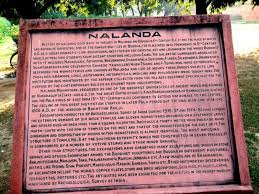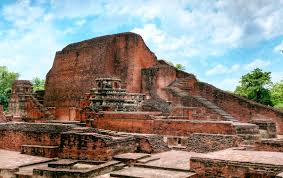The Evolution of Knowledge: A Journey Through the World’s Greatest Centers of Learning from Prehistory to the Present
From the dawn of human civilization to the modern era, centers of learning have shaped societies, preserved knowledge, and propelled innovation. This article traces the evolution of educational institutions—from prehistoric knowledge hubs to today’s global universities—showcasing their contributions to human progress.

1. Prehistoric Knowledge Transmission (10,000 BCE–3000 BCE)
Before formal institutions, knowledge was shared orally and through communal rituals.
- Göbekli Tepe (Turkey, c. 9600 BCE): A Neolithic sanctuary where hunter-gatherers exchanged astronomical and spiritual knowledge.
- Cave Art (Lascaux, France, c. 15,000 BCE): Visual storytelling as a medium for cultural and survival education.
2. Ancient Civilizations (3000 BCE–500 BCE)
Mesopotamia
- Edubba (Sumer, c. 2500 BCE): The world’s first known schools, training scribes in cuneiform writing, mathematics, and law.
Egypt
- Temple Schools (e.g., Heliopolis): Centers for astronomy, medicine, and engineering, linked to priestly classes.
Indus Valley
- Urban Centers (Mohenjo-Daro, c. 2600 BCE): Evidence of standardized weights, geometry, and urban planning suggests organized learning.
3. Classical Antiquity (500 BCE–500 CE)
Greece
- Plato’s Academy (Athens, 387 BCE): Philosophy, mathematics, and dialectics.
- Aristotle’s Lyceum (Athens, 335 BCE): Empirical research in biology, ethics, and politics.
India
- Taxila (Gandhara, c. 600 BCE): A multidisciplinary hub for medicine, warfare, and Buddhist philosophy.
- Nalanda (427 CE): The world’s first residential university, attracting scholars from China, Persia, and Greece.
China
- Imperial Academy (Han Dynasty, 124 BCE): Confucian classics, history, and governance.
4. Medieval Era (500 CE–1500 CE)
Islamic Golden Age
- House of Wisdom (Baghdad, 8th–13th century): Translated Greek, Persian, and Indian texts; advanced algebra, optics, and medicine.
- Al-Qarawiyyin (Morocco, 859 CE): The oldest existing degree-granting university, focusing on Islamic law and astronomy.
Europe
- University of Bologna (1088 CE): Pioneer of legal studies and the modern university model.
- Oxford (1096 CE): Theology, natural philosophy, and early scientific inquiry.
Mesoamerica
- Calmecac (Aztec, 14th century): Elite schools for astronomy, governance, and military strategy.
5. Renaissance to Enlightenment (1500 CE–1800 CE)
Europe
- University of Padua (1222 CE): Galileo’s groundbreaking work in astronomy.
- Leiden University (1575): A hub for humanism and early modern science.
India
- Vikramashila (8th–12th century): Advanced Buddhist philosophy and tantric practices.
Middle East
- Madrasa al-Mustansiriyya (Baghdad, 1233): Integrated religious and secular sciences.
6. Modern Era (1800 CE–Present)
Europe
- University of Berlin (1810): Introduced the research university model, emphasizing academic freedom.
- Cambridge/Oxford: Leaders in physics, literature, and economics (e.g., Newton, Turing, Hawking).
United States
- Harvard (1636): Oldest U.S. university, pivotal in law, medicine, and technology.
- MIT (1861): Global leader in engineering and innovation.
Asia
- University of Tokyo (1877): Bridged Eastern and Western knowledge systems.
- Tsinghua University (1911): China’s STEM powerhouse.
7. 21st-Century Global Universities
- Stanford/Silicon Valley: Tech entrepreneurship and AI research.
- ETH Zurich: Leading in climate science and robotics.
- African Leadership University: Revolutionizing higher education in Africa.
Key Themes Across Eras
- Cultural Exchange: Taxila and Baghdad connected East and West.
- Innovation: Medieval Islamic scholars preserved and expanded Greek knowledge.
- Access: Modern universities democratize education through online platforms.
Conclusion
From Göbekli Tepe’s stone circles to Stanford’s AI labs, humanity’s quest for knowledge has transformed how we learn, innovate, and connect. These institutions are not just buildings—they are the legacy of our collective curiosity.
